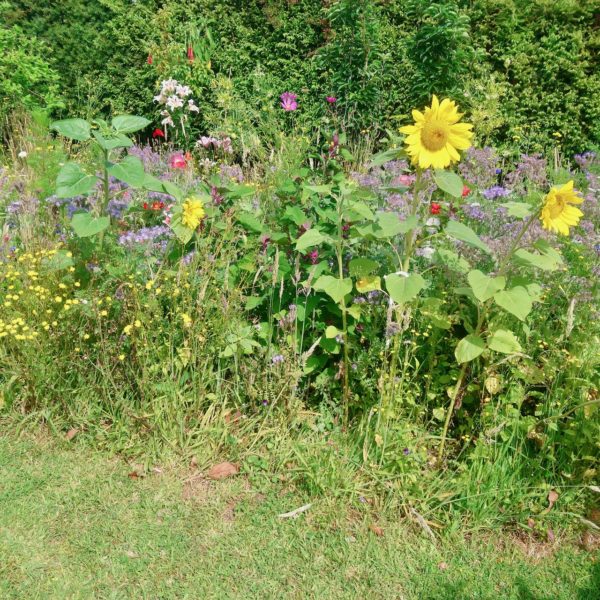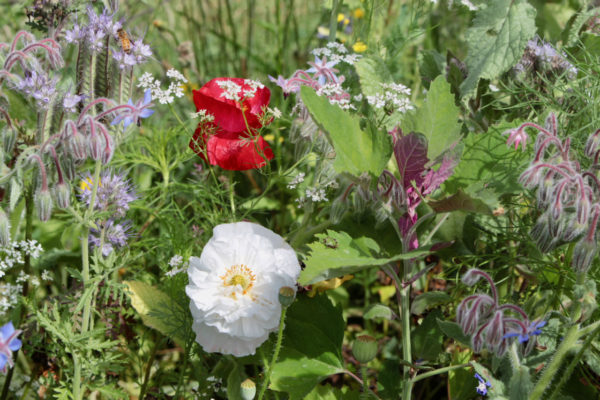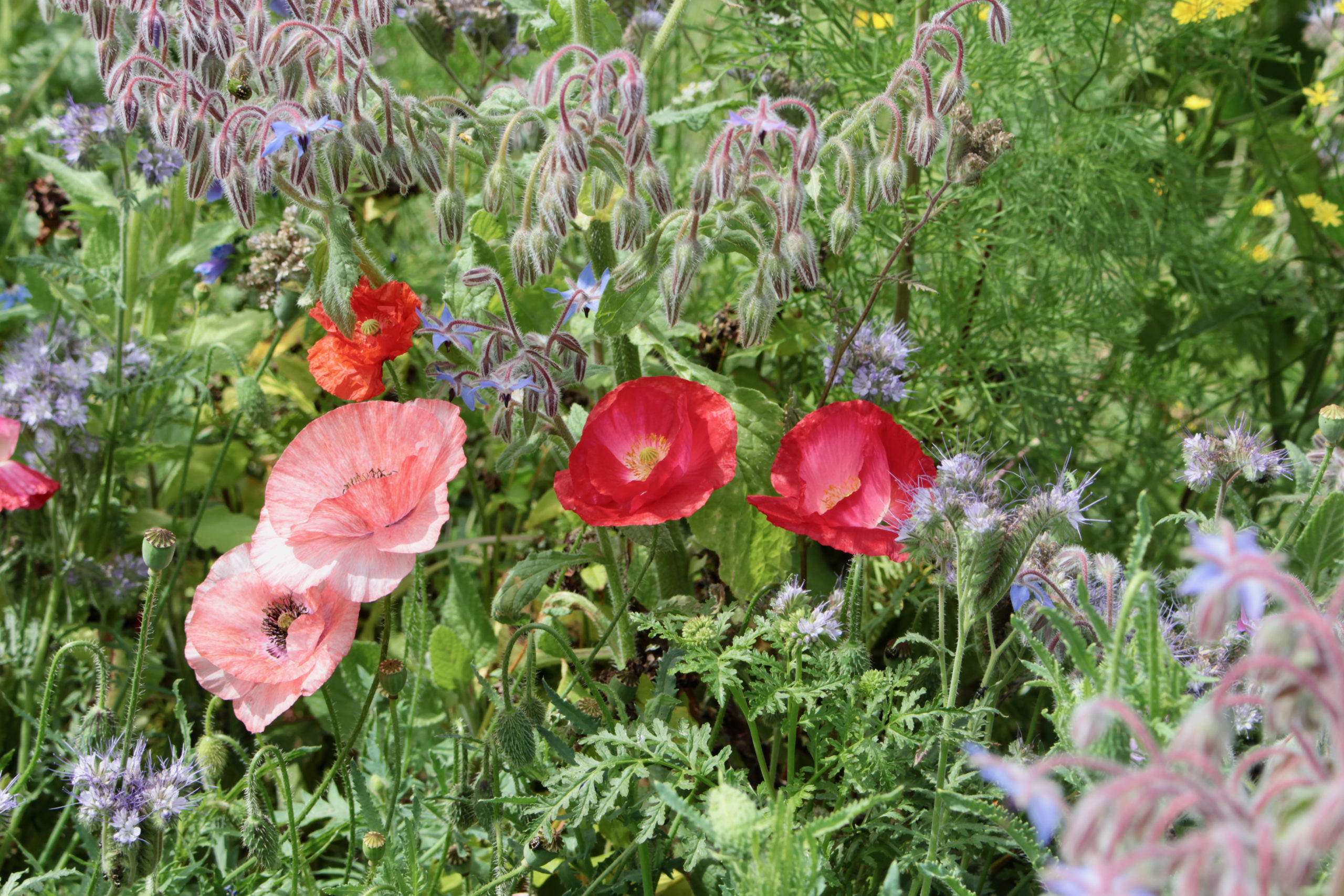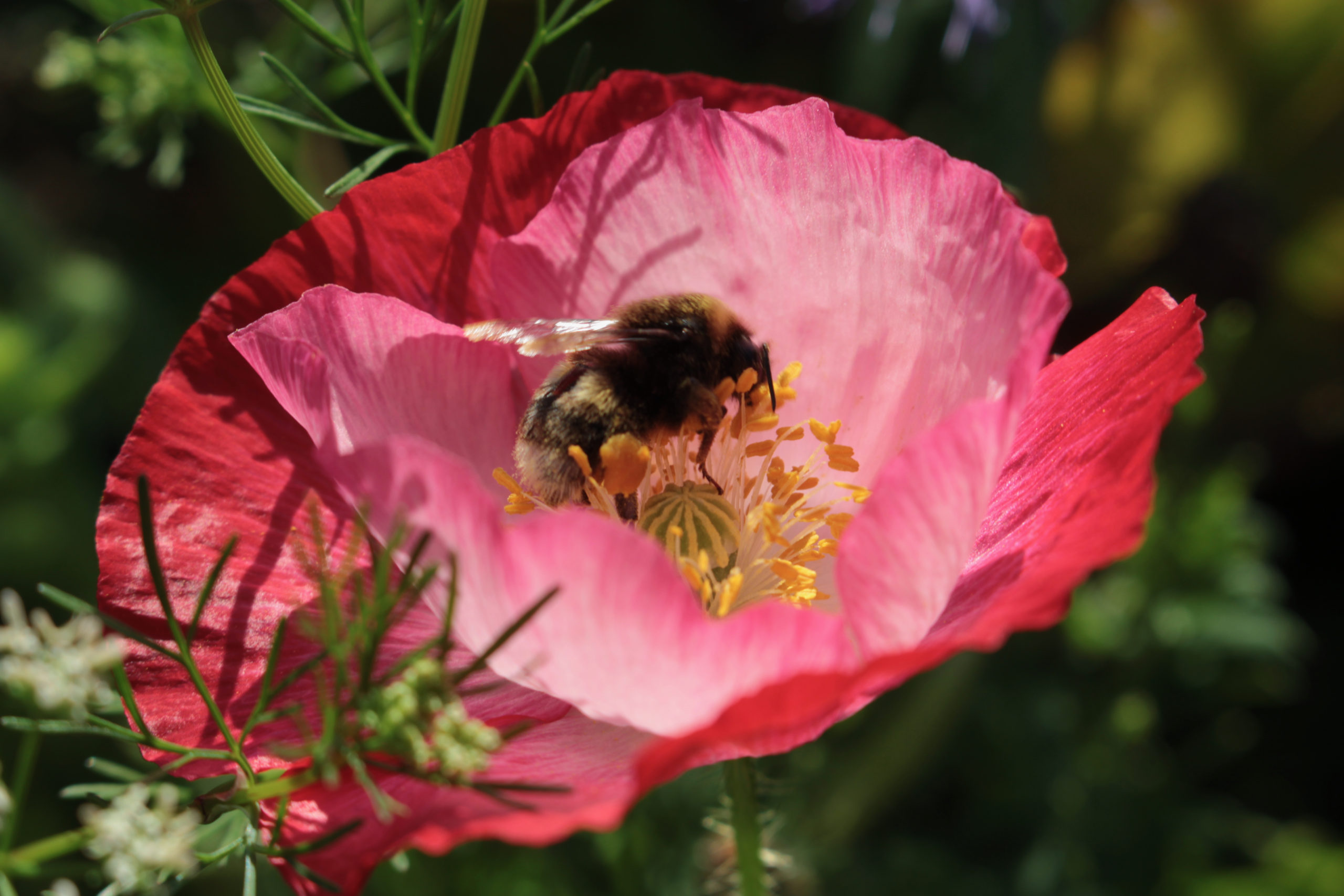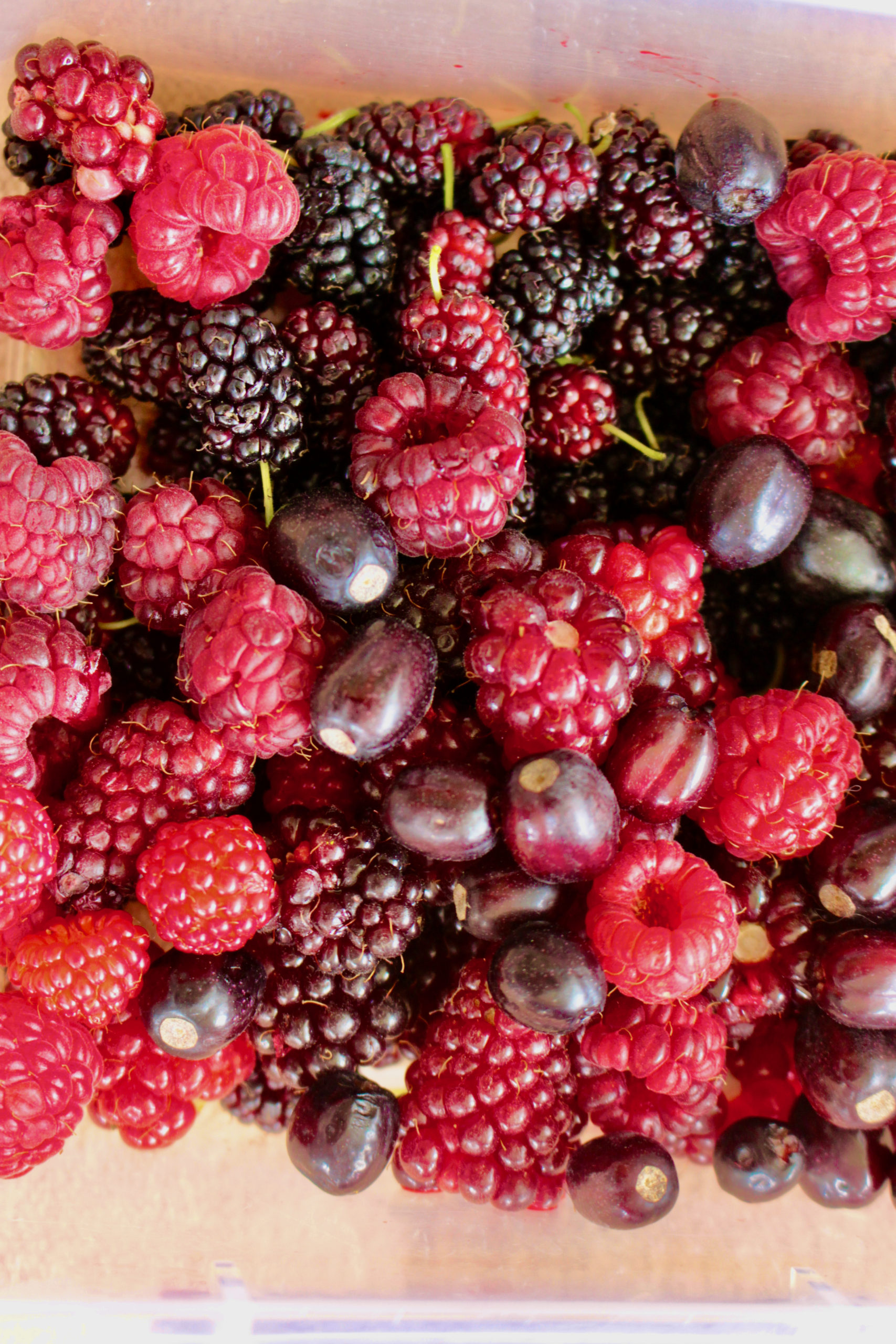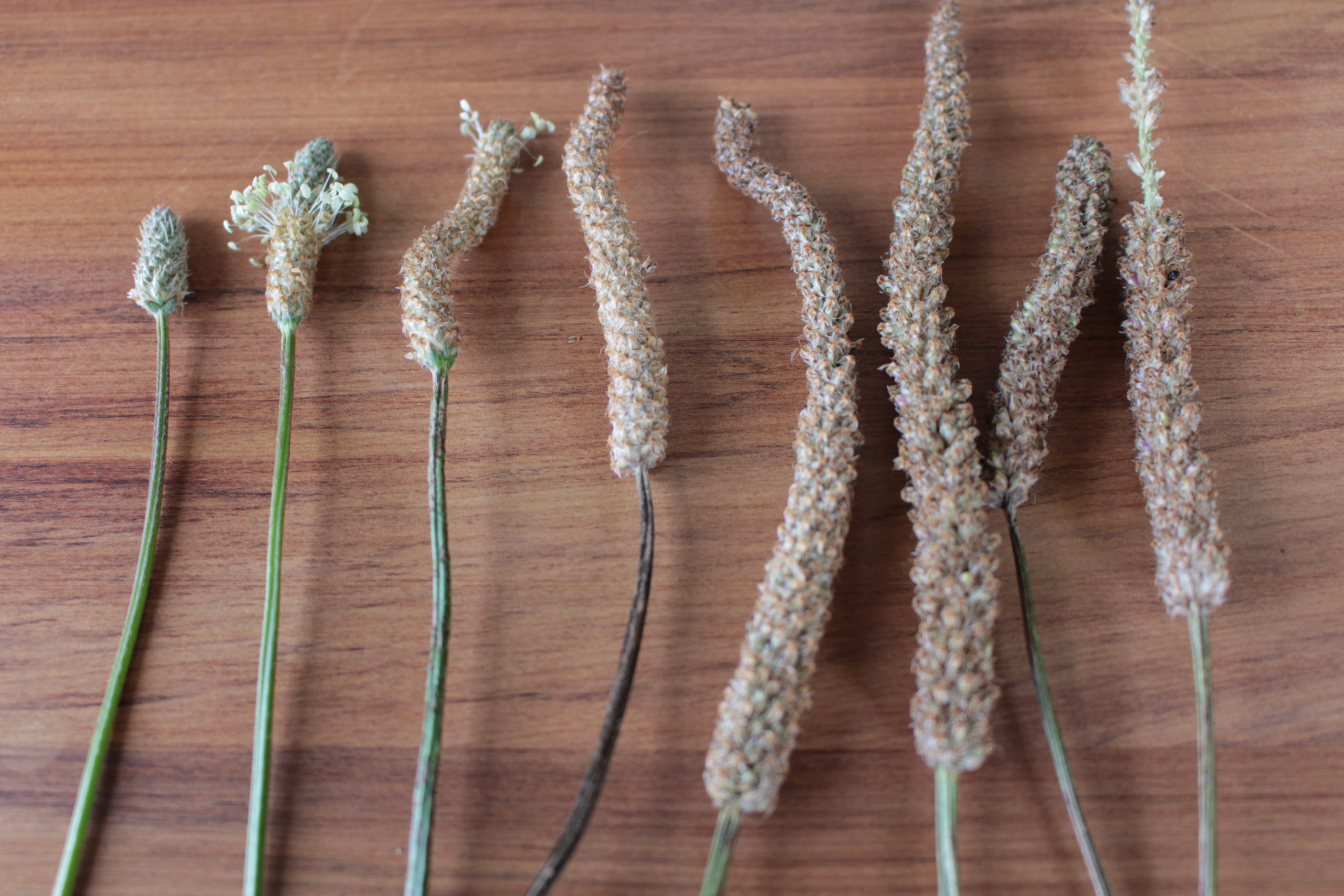|
|
|
|
Dear reader, Greetings on New Year's Eve!!! May you all have an amazing 2021 as we move into the age of Aquarius with the conjunction on December 21st of Jupiter and Saturn - remember the song from the 70's When the moon is in the Seventh House
And Jupiter aligns with Mars
Then peace will guide the planets
And love will steer the stars
This is the dawning of the age of Aquarius
Age of Aquarius
Aquarius
Aquarius 'Harmony and understanding
Sympathy and trust abounding, No more falsehoods or derisions, Golden living dreams of visions.....
What I've read is that the Age of Aquarius is about decentralization, people and communities. What I do fits right in with this. I love bringing people together interested in expanding their knowledge of plants and health and connecting with others. I also love to empower people and share knowledge. So thank you for being here to read this and a big welcome if this is the first newsletter you've received!
I trust you'll find something of interest below - there's all sorts from an interview with a dear friend, scenes in my garden, to recipes, poetry an inspiring documentary and more!
Workshops coming up:
Kawhia Sunday January 17th
Greerton Sunday 7th February
Greerton Sunday 14th March - this is a Sustainable Backyard event
To see the upcoming workshops go to here |
Red Green Festive Smoothie Recipe |
Red smoothie Blend 250gms strawberries. Add 1tsp chia seed or sweet basil seed – let thicken. Green smoothie ½ cup pineapple pieces
1 banana
½ avocado
2 dsp dairy or coconut yoghurt
1 leaf of aloe vera – peeled and scrape out the gel.
Slice of lemon including skin.
Handful of weeds including borage, mallow, plantain, fennel, purslane, kale, chickweed
¼ tsp ground cardamom
¼ tsp ground ginger
Pinch salt
1 T honey (optional)
2 cups water Blend all the ingredients together to a smooth consistency. Pour 1 cup or green smoothie into a bowl and add 1tsp chia or sweet basil seed let thicken. To put together in a glass – pour small amount red smoothie first, then alternate green and red. Decorate with flowers and pieces of strawberry. |
Julia’s Best Bliss Balls 1.5 cups dates & dried fruit (I used dried plums) could be dried figs 1.5 cups nuts – mixture of almonds, cashews or brazils and walnuts
Cup of nettle tips (make sure there’s no stalks)
I added 1 tsp vanilla essence. Could add ½ tsp or more for taste of dried ginger.
1-2 Tsp of freeze-dried raspberry Soak dried fruit until soft Soak the nuts
Blend the nuts and nettle first then add the dried fruit with a little water if needed from the dried fruit until you have a firm consistency that holds together when you roll it.
Roll in shredded coconut and freeze-dried raspberry crushed to crumbs. |
Kaye my edible weed soul sister 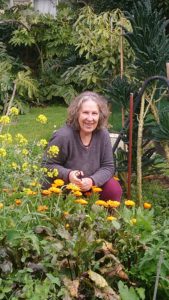 Kaye in her garden Kaye is a very dear friend of mine who I met through edible weeds! I asked her if I could interview her to share with you how we first connected and what wild edibles mean in Kaye’s life. How did we meet? The truth of it is I saw a photo of you on your website and I decided I must meet you. Looking at your photo – I felt like we already knew each other – we just hadn’t met. It was such a surprise that you lived just across the valley and we could meet straightaway. I wrote an email and said “you don’t know me but let’s meet up. We’ve got lots in common”. A firm friendship began within days. How did Julia’s edible weed workshop that you hosted at your 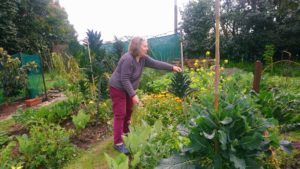 Kaye with the cavalo nero a kind of kale property change the way you view ‘weeds’? I was already using weeds but in quite a haphazard way, using intuition and trial and error, not really sure what I was doing. You ran a workshop in my garden and so much clicked into place for me.
To read the full interview go here. |
Wendell Erdman Berry (born August 5, 1934) is an American novelist, poet, essayist, environmental activist, cultural critic, and farmer. Throughout he demonstrates that our existence is always connected to the land, and that even in a modern global economy local farming is essential to the flourishing of our culture, to healthy living and stable communities, and indeed to the continuing survival of the human species. Wendell Berry has published more than eighty books of poetry, fiction, essays, and criticism.
I was looking to see if Wendell Berry wrote about weeds and found one. I can relate to it as I've seen many chimneys as all that remains of a house and the life that was once there in the NZ rural countryside.
Wendell writes
"And so there would always be more to remember that could no longer be seen...our history is always returning to a little patch of weeds and saplings with an old chimney sticking up by itself...and here I look ahead to the resting of my case: I love the house that belonged to the chimney, holding it bright in memory, and love the saplings and the weeds."
Wendell Berry |
To the left is a recent photo of the wild flower garden which is a rich diversity of plants including borage, phacelia, poppies, cornflowers, sunflowers, coriander magenta spreen and on the edge there are catsear flowering happily and nipplewort. It is such a joy to see it alive with bees and bumblebees. I planted sunflowers on the edge. |
There's even self sown Magenta spreen in the wildflower patch. It adds to the variety and colours. |
There is so much leaf and flower variety in a patch of plants growing together like this - one can look at it for ages. I have a particular passion for poppies. They are so delicate and only last a day or two. |
This is the vegetable garden with the brassicas under cover crop to keep off the cabbage white butterflies and it works really well. |
I have a wonderful crop of new avocados coming along. This variety is called 'Ester' and is semi dwarf with a size of 3m x2m but I keep it small. I liquid feed it and give it lots of mulch and compost. |
This is a veiw from my patio towards the wildflowers and the avocado tree which is just to the left of the bird bath. |
This is an Iceland poppy with a bumblebee. The wildflower patch has attracted many pollinating insects and my bees would have been very happy! |
I've had an abundant berry harvest which is ongoing. To the left are mulberries - black with stalks, boysenberries, raspberries, the small red berries are wild raspberries or Japanese wineberry and the smooth dark berries are fuchsia berries. I don't know their properties but I do know they are sweet with no pips and have a crunchy texture. |
This pretty fuchsia flower has the best berries besides the tree fuchsia which I'll feature another time. I don't know the name of this variety, but one of you might?? |
The difference between Dandelion lookalike seed heads
|
The difference between the seedheads of Dandelion Taraxacum officinale, Catsear Hypochaeris radicata, Hawksbeard, Hypochaeris radicata and Hawkbit Leontodon taraxacoides
To the left is Hawkbit which is a single solid stemmed plant in the group of four main dandelion look alike plants. Its seed heads are round, but smaller than Catsear or Dandelion and a light brown colour.
|
In this photo are Catsear left, Hawksbeard centre and true Dandelion right. You can see the seed head size and colour differences. |
Here are the leaves of the same four different plants. From the left Catsear, Dandelion, Hawksbeard and Hawkbit. All are edible but I usually on eat Dandelion and Hawksbeard as I find the others too hairy. Just my personal preference. |
Narrow leaf plantain Plantago lancelota is in full flower. In the image above you can see the progression of the seed heads from bud to maturing seeds. The second and third seed heads from the left show the flowers with their bobbing anthers. Plantain is pollinated by the wind and if you bump a seed head clouds of pollen fly off - maybe not good if you have an allergy to it but it is amazing how much pollen they contain. The seed head flowers open progressively up the stem until the top flowers have finished and then the seeds start to mature and fatten up. On the right are mature seed heads and you can see I have stripped off the top seeds and eaten them! They taste a little bitter but also nutty and chewy and pleasant to eat I find. You can strip them to add to stir fries or dukkah or muesli or grind them to add to flour for baking adding a wild plant touch to your food.
The seeds are used in the treatment of parasitic worms and they contain up to 30% mucilage which swells up in the gut, acting as a bulk laxative and soothing irritated membranes. |
THRIVE: What on Earth Will it Take? is one of the most widely viewed documentaries in history with over 90 million views across 27 different languages. Released in November 2011, the unconventional documentary lifted the veil on what is truly happening in our world by uncovering the global consolidation of power in nearly every aspect of our lives. It is free to watch on Youtube.
Thrive II was released 26 September 2020. I've watched half of it (it is 2 hours long) and was blown away and so excited watching it as the solutions explored are totally amazing - we never hear about them and I thought it was so positive about the future!!
THRIVE II: This Is What It Takes brings viewers behind the scenes with the people and innovations that have the power to transform life for everyone. It follows a journey across the globe investigating the most promising solutions in energy, health, consciousness, and non-coercive self-organizing while unpacking the underlying science, principles, and strategies that make them possible. Inspiring trans-political, grassroots, and decentralized solutions THRIVE II offers practical tools for reclaiming authority over our lives, an endeavor more significant by the failures of governments and authoritative institutions amid the pandemic and civil unrest sweeping the globe. Here is a link to access it. |
I've been making sumptious salads with pretty much everything from the garden which feels very satisfying and I'm so grateful for the abundance around me. Day lilies flowers are really nice to eat petal by petal. They are sweet and have a crunchy texture. |
I really love this art work by James Brunt that I recently found. It so blends into nature. He's done some amazing beach ones as well. From the webpage "James Brunt is an English artist who creates beautiful land art using natural objects in his home county, Yorkshire. The artist’s works will leave you with a feeling of serenity and calmness and after seeing them, you’ll want to try your hand at it yourself". Here's a link to see more. |
Here's the DONATE button so that if you feel inspired by what you have read you could make a koha or donation. as an energy exchange for the creation time of this masterpiece :)
MANY BLESSING, HEALTH, ABUNDANCE, JOY AND PEACE
MUCH LOVE
JULIA
|
|
|
|
|
|
|






